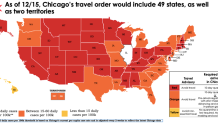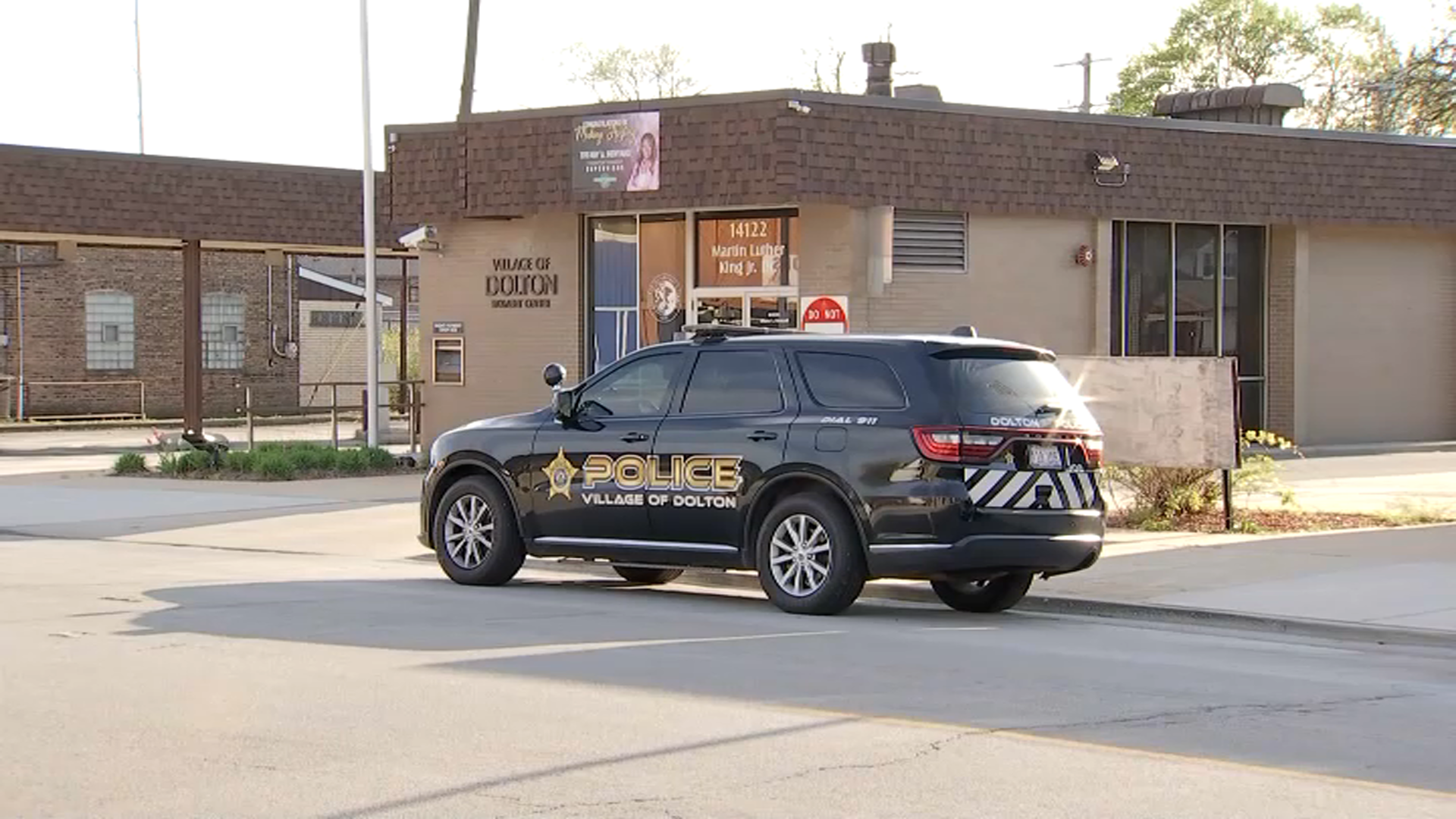Chicago health officials updated the city's coronavirus travel order Tuesday, changing its guidelines and its threshold as only one state remained below the quarantine requirement.
As of Tuesday, 31 states were categorized as "red" states, meaning travelers must quarantine when coming to Chicago. That's up from two weeks prior as Tennessee, Arizona, Delaware, Pennsylvania, Connecticut, California, Alabama, Kentucky, Mississippi, Arkansas, Massachusetts, New Hampshire, West Virginia transitioned onto the highest level of the order.
Seventeen states, plus Puerto Rico, were listed as "orange," meaning they require a quarantine or negative test prior to arrival in Chicago. Most recently, Iowa dropped from red to orange status, but Maine and Vermont were both added to the orange list.
Only one state, Hawaii, was listed as "yellow," meaning it does not require a quarantine.

The emergency travel order requiring a quarantine for travelers from certain locations was issued in July in an effort to slow the spread of the deadly coronavirus.
Last month, the city changed the way it reports states being added to its travel order, categorizing states in a color-coded map to determine which requirements are in effect for travelers, from the original requirement of a 14-day quarantine to a negative test result depending on the severity of the state's outbreak.
Local
The latest update to the order follows changes in the recommendations from the Centers for Disease Control and Prevention. In order to be listed as a "red" state, the threshold was increased to 60 new cases per day per 100,000 residents, up from just 15 cases per day. It also changes the quarantine timeframe from 14 days to 10.
Here's a look at the guidelines:
- Yellow: States with a rolling 7-day average less than 15 cases/day/100k residents.
- No quarantine or pre-arrival test required. Maintain strict masking, social distancing and avoidance of in-person gatherings
- Orange: States have a rolling 7-day average between 15 cases/day/100k residents and the Chicago rolling 7-day average (currently: 60 cases/day/100k residents)
- 10-day quarantine OR pre-arrival negative test no more than 72 hours before arrival in Chicago with strict masking, social distancing and avoidance of in-person gatherings
- Red: States have a higher rolling 7-day average of positive cases/day/100k residents than Chicago.
- 10-day quarantine
Arwady has said previously that no matter a state's color under the order, she would not recommend any unnecessary travel.
"The bottom line, you should not be traveling," she said last month. "Right now COVID is surging across the entire United States and you risk bringing COVID with you."
The city said it hopes to simply educate travelers about the order, but those found in violation could be subject to fines of between $100 and $500 per day, up to $7,000.
"The quarantine and pre-arrival testing requirements apply to people even if they have no COVID-19 symptoms," the city's health department said in a release.
Exceptions can be made for travel for medical care, parental shared custody and business travel for essential workers. It also does not apply to an individual passing through states for less than 24 hours over the course of travel, including layovers at airport or people driving through a particular state. Daily commuters to and from neighboring states are also exempt.
Chicago's travel order, which began on July 6, is now evaluated every other Tuesday, with any additions taking effect the following Friday.



